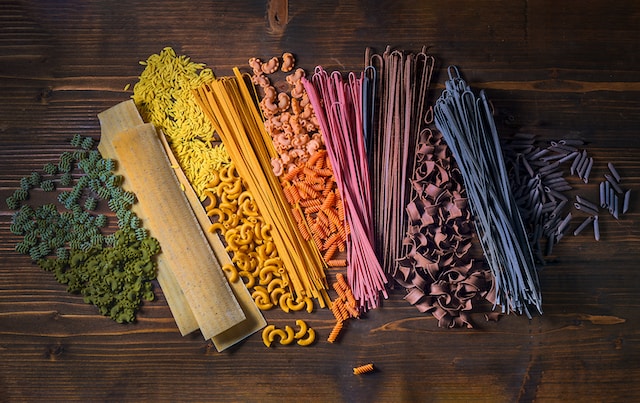First introduced to North America by Thomas Jefferson, pasta has become a staple in many homes. Made from a variety of grains, pastas are a good source of iron. Whole grain pasta is also enriched with thiamine, niacin and other B vitamins. Although the protein in white pasta lacks some essential amino acids, these can easily be obtained from a sprinkling of Parmesan cheese as a low-calorie topping.
In general, pasta is good for your health but nutrition profiles differs slightly with each type of pasta. For instance, egg noodles provide complete protein while variations flavored with spinach or tomato offer a few more antioxidants and high-protein pastas are enriched with soy flour and milk solids. These variations, however, are not significant.
Health benefits of pasta
Improves mood. Carbohydrate-rich pastas can help increase levels of serotonin in the brain, which make you feel good.
Stabilizes blood sugar. Whole grain pasta, which contains about three times the fiber of white pasta, won’t cause dramatic blood swings, so it’s a great alternative for people with diabetes who must build their menus around complex carbohydrate choices.
Improves heart health. The fact that whole grain pasta is fiber rich also means it is good for a healthy heart. Fiber helps lower cholesterol levels and can aid weight loss, two critical factors to long-term heart health.
Reduces cancer risk. Whole grain pasta can reduce the risk of colon cancer. A Swedish study found that those who consumed more than 4.5 servings of whole grain pasta daily had 35% lower risk of colon cancer than those who ate less than 1.5 servings of whole grains a day.
Only two health risks of pasta
One health risk by eating past is gaining weight. The second, pasta can increase a risk of diabetes. White pasta is made from refined flour. Because refined flour is digested quickly, a large plate of paste can send your blood sugar levels soaring, only to crash several hours afterward and trigger renewed hunger. Such blood-sugar swings are linked with weight gain and may also lead to diabetes.
Pactical tips on pasta
Simmer leftover sauced pasta in broth for an instant soup. Brown cheese tortellini in a buttered skillet, then sprinkle bread crumbs lightly over the pasta to add texture. Serve a stir-fry on whole wheat penne in place of rice.
Fresh pasta is best for delicate sauces, dried pasta is better for more robust sauces. Fresh pasta is made with eggs, so it may be higher in cholesterol content than dried pasta.
If you are watching your cholesterol, skip egg noodles. However, eggless “egg” noodles are available too.
You will get three times the fiber per serving if you choose whole wheat over white pasta. Experiment to find one you like the most.
New high-fiber, high-protein varieties are even friendlier to your blood sugar. Some are made from grains such as oats, spelt, and barley in addition to durum wheat, which means they are higher in soluble fiber.
Because it is highly perishable product, fresh pasta must be refrigerated in an airtight container. It should be used within a few days of purchase or frozen. Keep frozen pastas up to a month. Dried pasta can be kept in a cool and dry place indefinitely.
When cooking pasta, adding a small amount of oil (1 tsp) to the water may help prevent spillovers and keep pasta from sticking. Salt is often added to pasta water, but it does not prevent stickiness. Salt is for flavor only. To reduce the boiling time – add the salt after the water is boiling.
Pasta is good for your health
Generally speaking, there are 210 calories in a typical serving of past, which should be about a size of a baseball. The big differences is between pastas made with refined flours and those are made with whole grains. Whole grain pastas, such as those made of quinoa, buckwheat or whole wheat, offer two to three times the fiber with white pastas, which helps with a variety of health conditions. Furthermore, most pastas are rich in minerals and vitamins that is why pasta is good for your health. Serving 1 cup of pasta gives you about 2mg of iron. 1 cup of white pasta has about 5-7 grams of protein.






